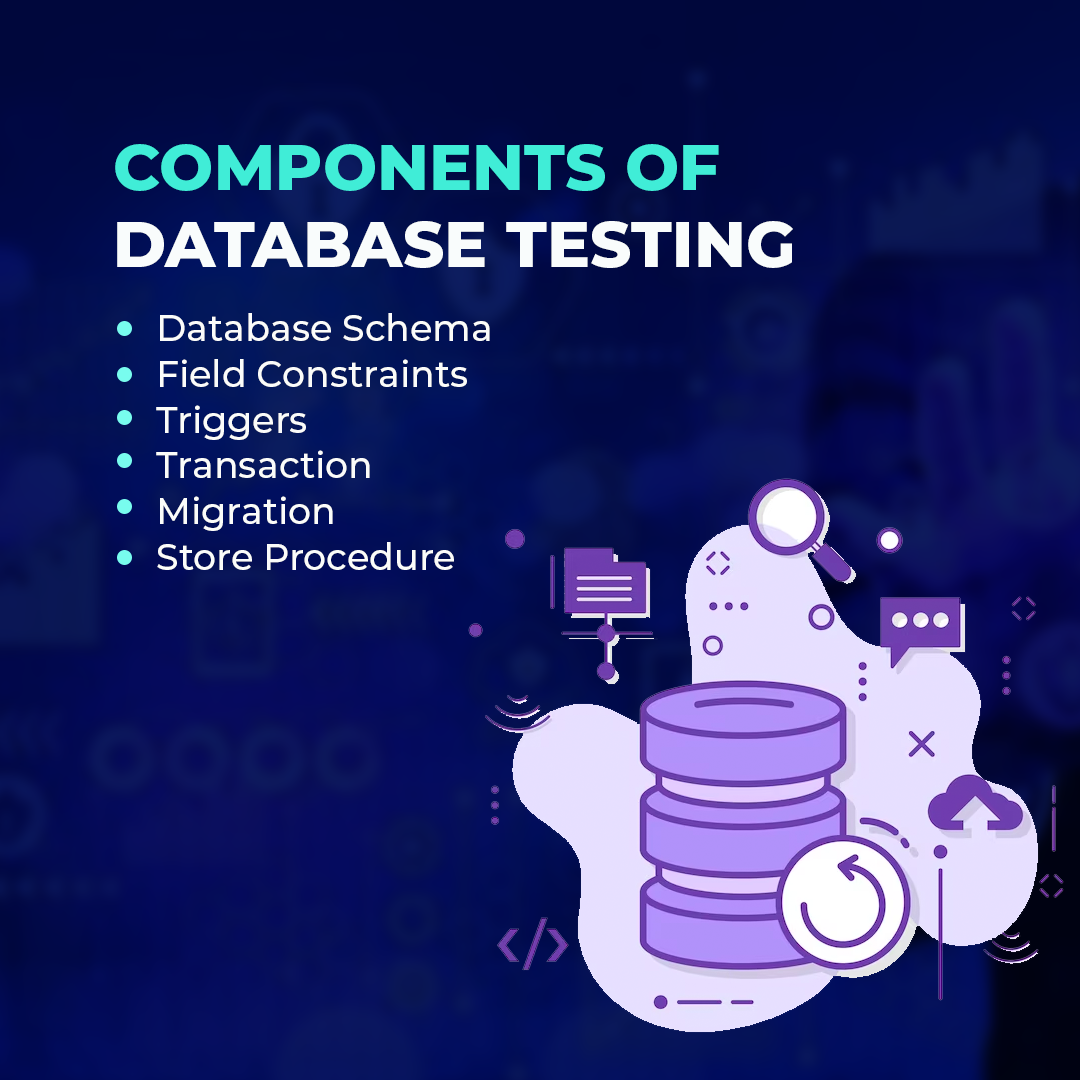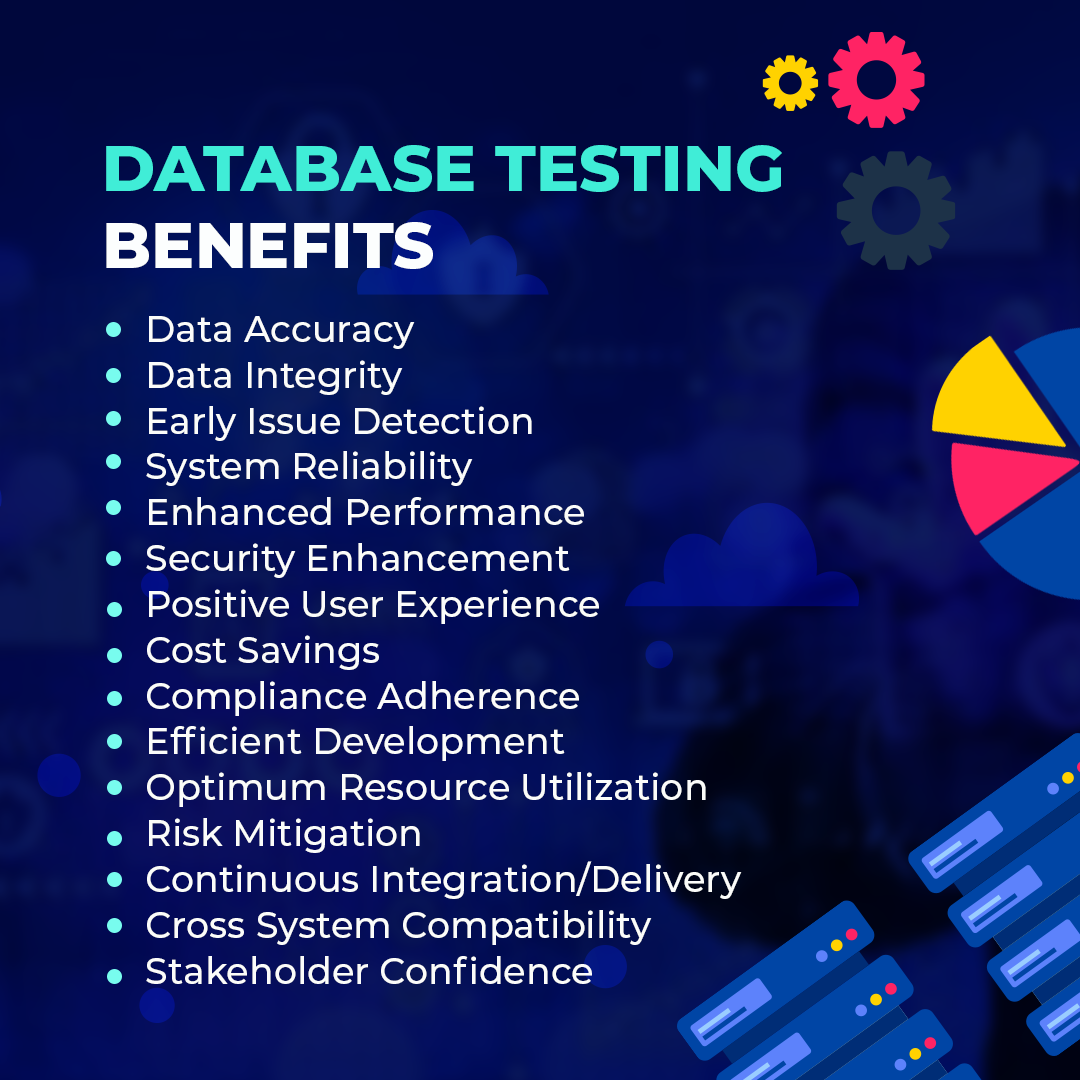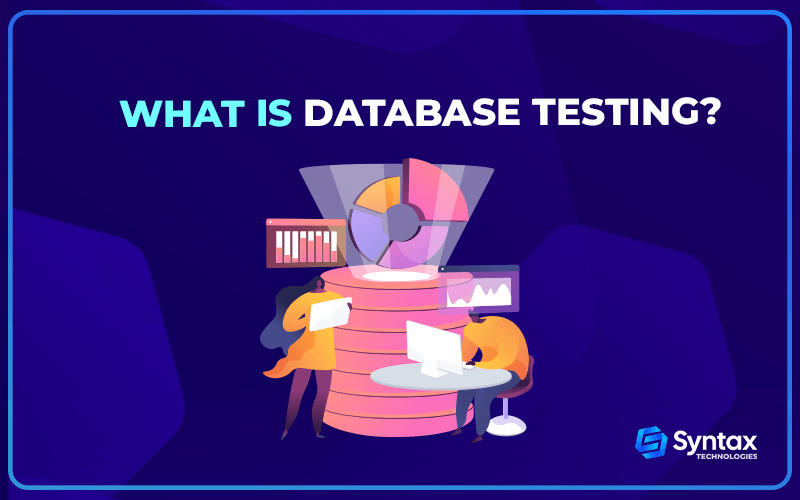Database testing involves checking the integrity, accuracy, and reliability of data in a database system. It forms an integral part of software testing, ensuring that application data is stored appropriately and retrieved in a consistent, accurate manner. Various aspects are addressed under database testing, including data validity, data integrity, performance checks, and more. This process is crucial to maintain the quality and reliability of a software system, thereby enhancing its overall performance.
In this blog post, we will take a closer look at database testing, its importance, the different kinds of tests involved, and the benefits it offers for effective quality assurance.
Defining Database Testing ? What is it and Why is it Important?
Database testing is a critical process within software development and quality assurance that focuses on assessing the accuracy, integrity, reliability, and performance of a database system. It involves executing a series of tests and checks to ensure that the database is functioning as expected, data is stored correctly, and queries produce accurate results. The primary goal of database testing is to identify and address any defects, inconsistencies, or issues within the database to maintain its reliability and effectiveness.

Importance of Database Testing:
Data Accuracy: It helps ensure that data is stored, retrieved, and manipulated correctly.
Data Integrity: Testing prevents data corruption, duplication, and other integrity issues, which could lead to incorrect decisions.
System Reliability: Thorough testing helps identify potential issues early and ensures the database system’s stability.
Performance Optimization: By identifying performance bottlenecks and inefficiencies, database testing helps improve the system’s responsiveness and scalability.
Compliance and Security: Rigorous testing ensures that sensitive data is protected and that the database system complies with relevant regulations.
Cost Savings: Detecting and addressing issues early in the development cycle is more cost-effective than dealing with them after deployment.
User Experience: Accurate data and efficient query performance contribute to a positive user experience.
Types of Database Testing
There are several types of database testing, each aimed at different aspects of the database’s functionality. These include
Structural Testing: It includes testing of stored procedures, triggers, views, and schema testing.
Functional Testing: This testing verifies whether the operations performed by the database such as insert, delete, update, retrieve are functioning as expected.
Non-Functional Testing: This includes testing for performance, stress, compatibility, and security of the database to ensure that it can handle data, users, and queries effectively under various conditions.
Boundary Testing: Here, the database’s reaction to boundary values in the input domain is tested, focusing on the limit conditions within the software, database, or among specific partitions.
Regression Testing: This involves testing the database after modifications have been made to ensure that previous functionality still works as expected.
Data Migration Testing: This testing ensures that the migration of data from the old system to the new system was successful while maintaining data integrity.
Benefits of Database Testing
Data Accuracy: Ensuring that data is stored, retrieved, and manipulated accurately.
Data Integrity: Preventing data corruption, duplication, and inconsistencies.
Early Issue Detection: Identifies defects and issues in the early stages of development, reducing the cost and effort of fixing problems later.
Improved System Reliability: Thorough testing minimizes the likelihood of database failures, ensuring the stability and availability of the system for users.
Enhanced Performance: Performance testing uncovers bottlenecks, allowing optimization of query execution and overall system responsiveness.
Security Enhancement: Security testing helps uncover vulnerabilities, ensuring that sensitive data is protected.
Positive User Experience: Accurate data and efficient query performance result in a seamless user experience.
Cost Savings: Early issue detection and prevention through testing reduce the costs associated with fixing problems post-deployment.
Compliance Adherence: Helps ensure that the database system complies with relevant industry regulations and standards.
Efficient Development: Provides developers with confidence that changes to the database schema or code do not introduce unintended side effects.
Optimized Resource Utilization: Identifying performance bottlenecks and optimizing queries can lead to more efficient resource utilization.
Risk Mitigation: Reduces the risk of critical data loss, system failures, and security breaches.
Supports Continuous Integration/Delivery: Integrates seamlessly into automated build and deployment pipelines, enabling faster and more reliable release cycles.
Cross-System Compatibility: Ensures the database functions correctly across different environments and configurations.
Stakeholder Confidence: Instills confidence in stakeholders, including users, management, and investors, about the system’s reliability and quality.

How to Perform Database Testing
Understanding Requirements: The first step is to gain a thorough understanding of the database’s requirements, including its structure, features, and expected performance.
Creating a Test Plan: Based on the requirements, a test plan should be developed that outlines what aspects of the database will be tested, the testing methods that will be used, and the expected outcomes.
Setting Up a Test Environment: A separate test environment should be set up that mirrors the production environment as closely as possible.
Test Execution: The tests outlined in the test plan are then executed. This could include running scripts to test the database’s functionality, injecting test data to test its handling of data, and monitoring its performance under load.
Analyze Test Results: After the tests have been executed, the results should be analyzed to identify any discrepancies between the expected and actual results.
Report Findings: Any issues or defects identified should be reported to the development team for resolution.
Retesting and Regression Testing: Once the identified issues have been addressed, the tests should be re-run to verify the fixes. It’s also important to perform regression testing to ensure that no new issues have been introduced.
Tools for Database Testing
We can categorize the tools on the basis of their functionalities.
Database Unit Testing
- DbUnit
- tSQLt
- utPLSQL
Database Functional and Regression Testing
- Selenium
- TestNG
Database Performance Testing
- Apache JMeter
- HammerDB
Database Security Testing
- SQLMap
- AppScan
- Netsparker
Database Management Systems with Built-in Testing Tools
- SQL Server Data Tools (SSDT)
- Oracle SQL Developer
General Testing Frameworks with Database Integration
- JUnit
- PyTest
Common Challenges in Database Testing
Database testing, while essential, does present its own set of challenges. Some of these include:
Complexity of Data: Databases can contain a vast amount of complex data, making it difficult to validate every piece of data effectively.
Lack of SQL Knowledge: SQL is the language of databases, and a lack of proficiency in SQL can hinder effective database testing.
Data Privacy: Testing often requires the use of real data, which could raise privacy and confidentiality issues.
Scalability: Large databases can be difficult to manage and test efficiently.
Synchronization Issues: If data is not properly synchronized between different database environments, it can lead to inconsistencies and errors during testing.
Over Reliance on GUI: Graphical User Interface (GUI) based tools can sometimes mask underlying database issues that would have been detected through SQL queries.
Handling Test Data: Managing, generating, and cleaning up test data is a significant challenge in database testing.
Performance Testing: Simulating real-world loads for performance testing can be difficult and resource-intensive.
Data Migration Testing: Ensuring data integrity during migration between different database systems or versions can prove challenging.
Articles you may like:
The Ultimate Guide to Risk Management in Testing
Smoke Testing vs. Sanity Testing
Best Practices for Automated Database Testing
- Define Clear Testing Goals
- Choose the Right Testing Tools
- Create Realistic Test Data
- Implement Continuous Testing
- Focus on Security
- Prioritize Critical Areas
- Regularly Review and Update Test Cases
- Train Your Team
- Monitor and Optimize Performance
- Document Your Testing
Conclusion
In conclusion, database testing is an essential component of software development that ensures the quality, performance, and reliability of a database system. The process may be complex and fraught with challenges, but through careful planning, the selection and use of appropriate testing tools, and adherence to best practices, these obstacles can be overcome.
By investing in thorough database testing, organizations can realize significant benefits, including enhanced performance, improved security, cost savings, risk mitigation, and increased stakeholder confidence.

